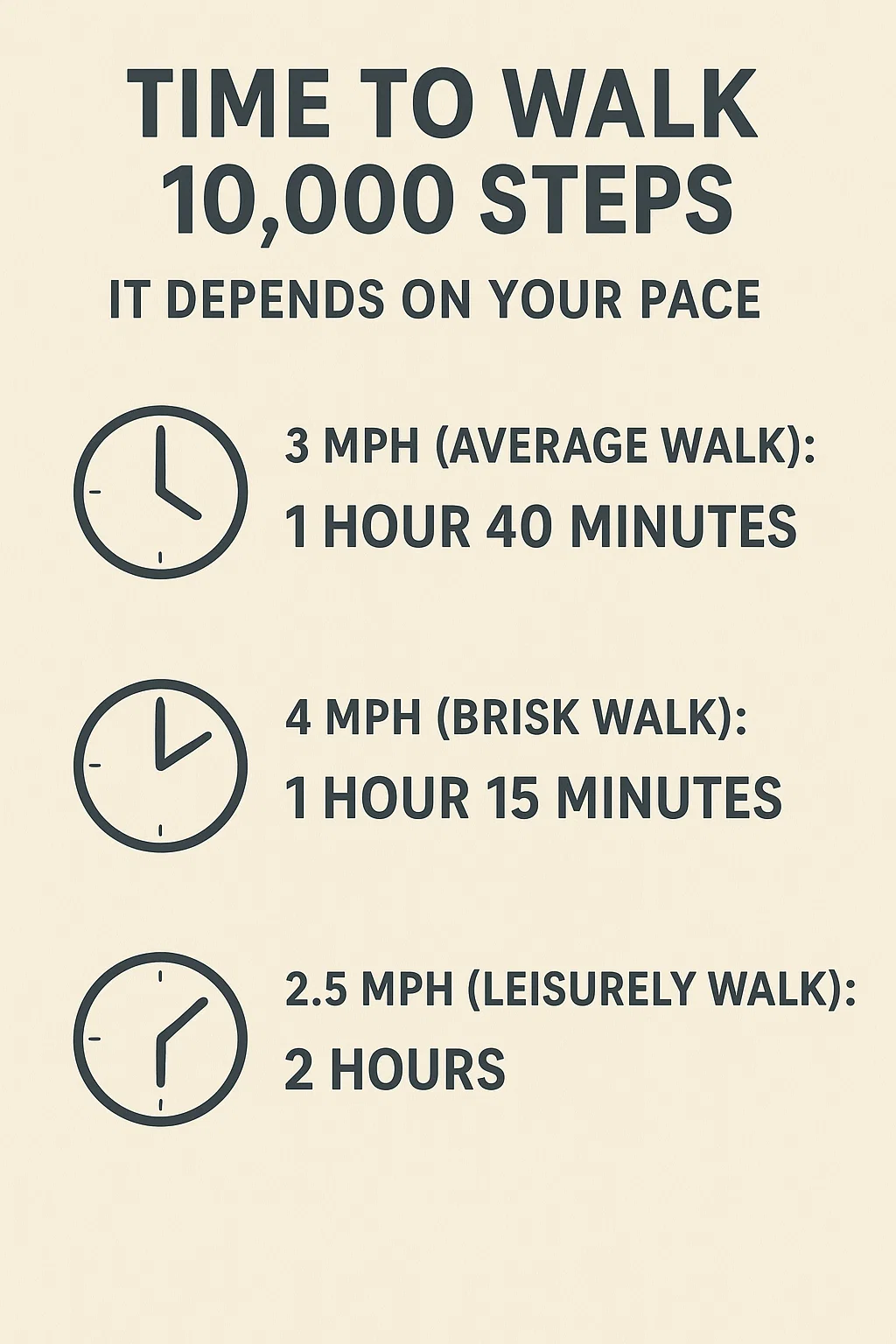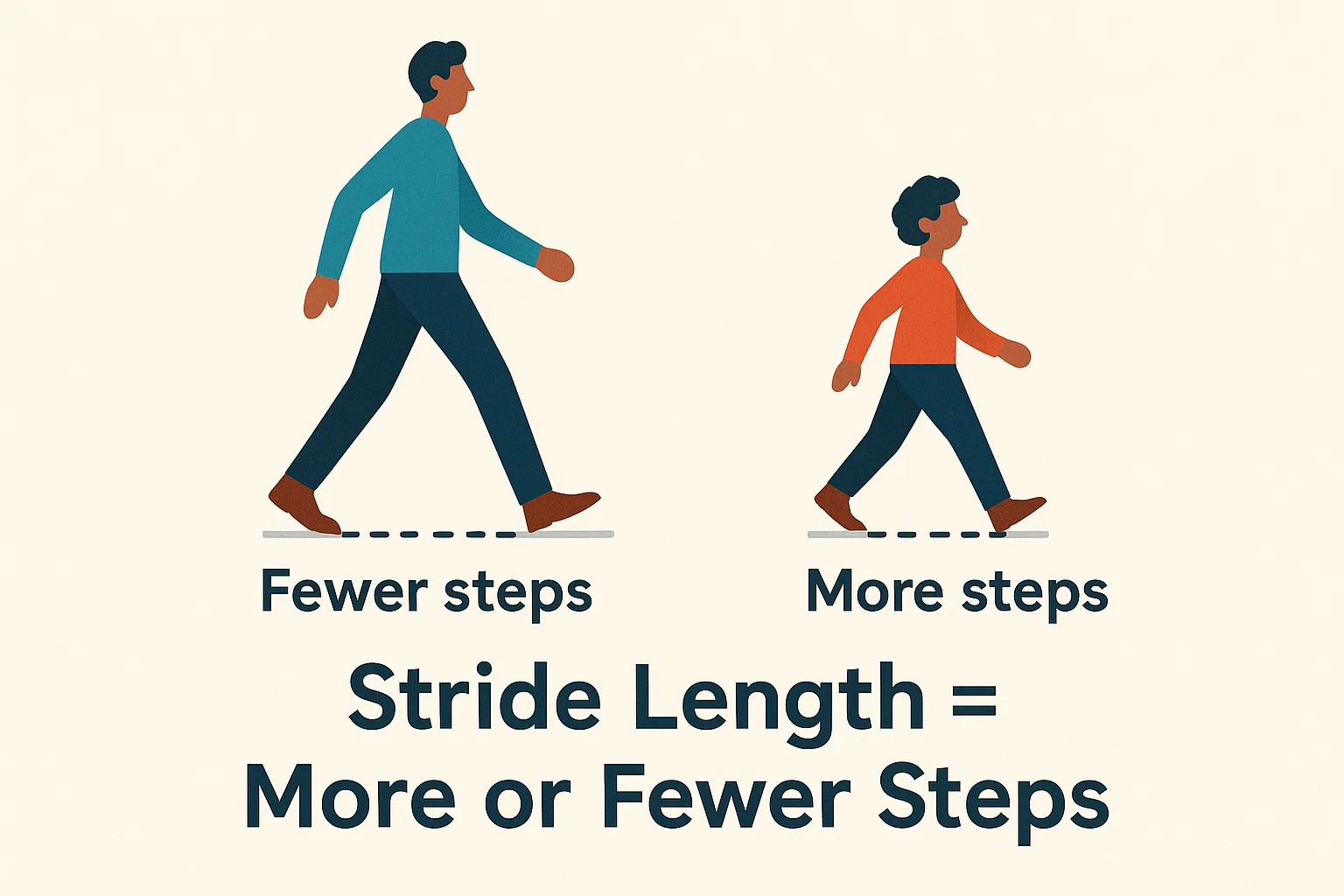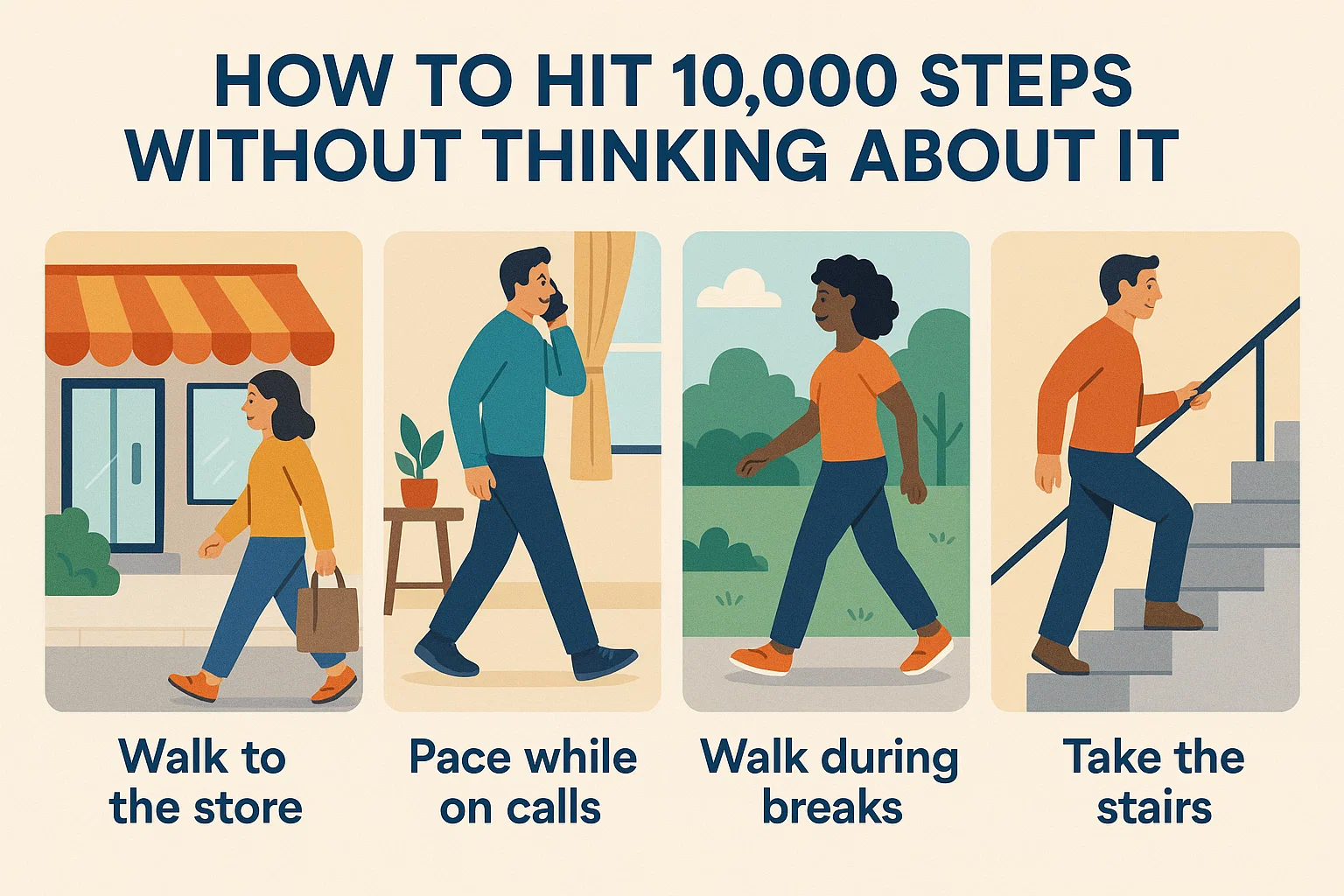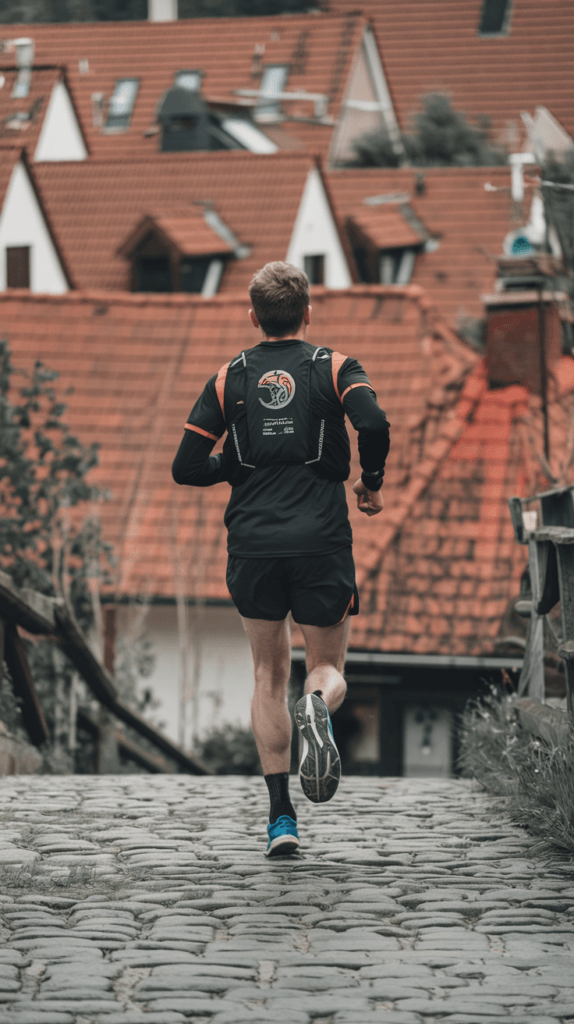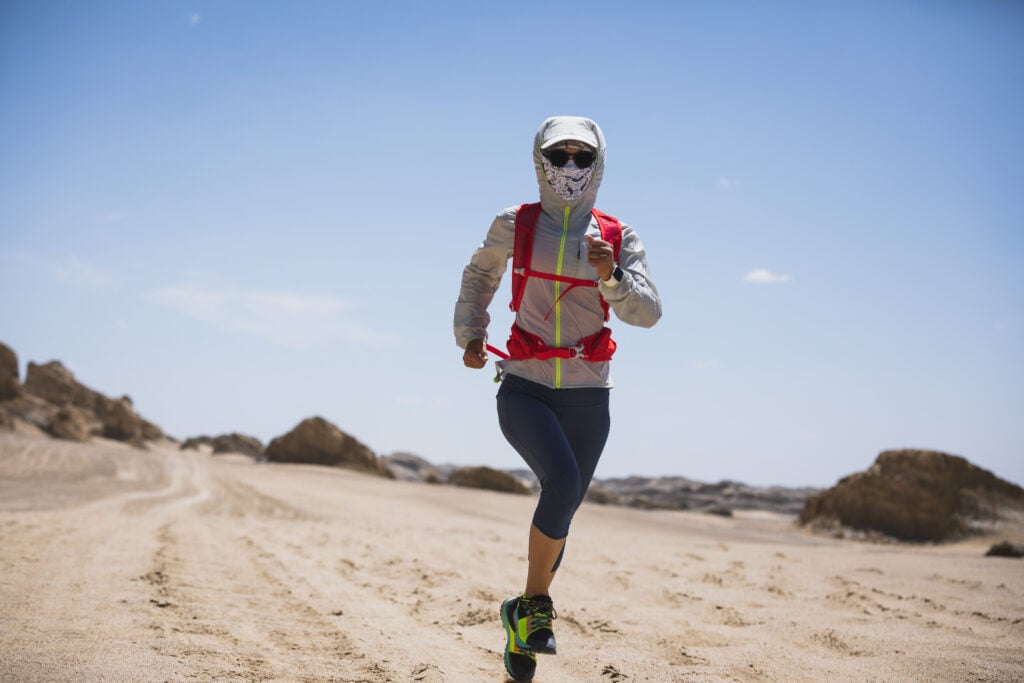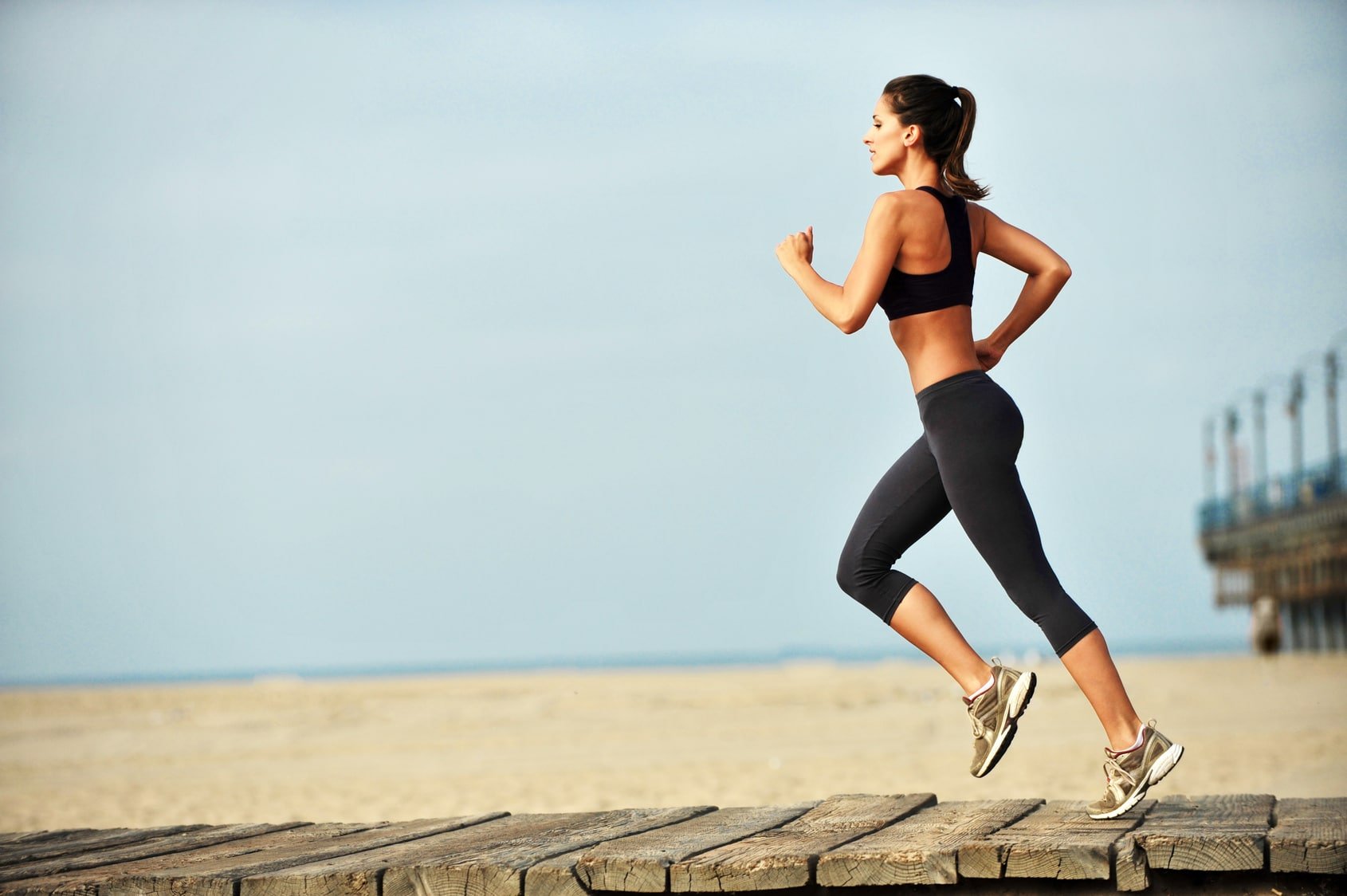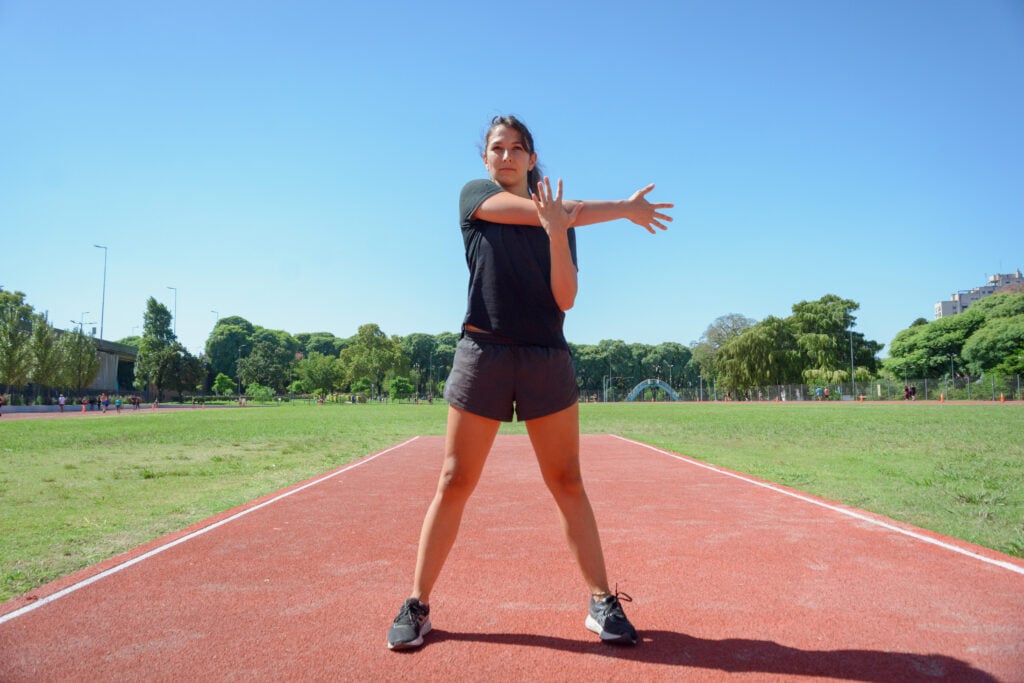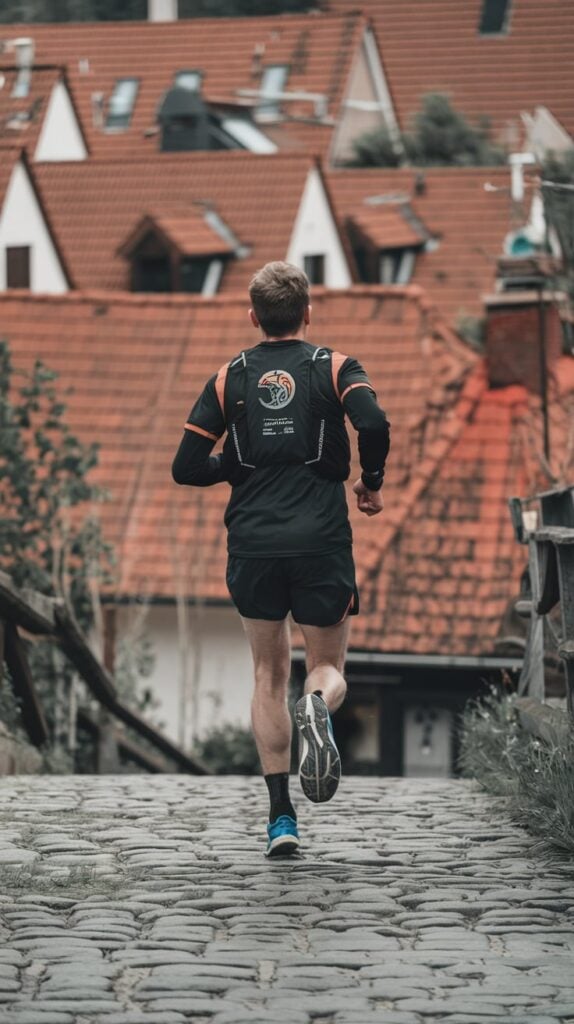I Used to Laugh at Compression Pants — Now I Live in Them
I’ll be honest: back in the day, I used to side-eye guys in compression tights.
I figured they were either trying to look like superheroes or just copying elite runners they saw on Instagram.
I remember thinking,
“Why would anyone squeeze into those things unless they were racing Kipchoge?”
But like a lot of things in running, experience changes you.
Over the years — especially coaching newer runners and getting humbled on trails in Bali — I’ve come to see compression gear differently.
I’ve watched beginners finally enjoy pain-free runs, trail runners stay protected from the elements, and marathoners bounce back faster post-race… all thanks to a good pair of tights.
So here’s the truth — from someone who used to laugh and now owns more pairs than he wants to admit.
Let’s break it down.
So, Do Compression Pants Actually Help?
Look — they won’t make you a speed demon overnight.
But they can make the miles feel smoother.
The science backs it up: compression helps reduce muscle vibration and can delay that deep ache that creeps in during longer runs (source: VU.edu.au).
They’re also champs at fighting off thigh chafing (if you know, you know), and they’re surprisingly good at keeping you warm when the temperature drops — something I learned the hard way running through the chilly highlands here in Indonesia.
But maybe the biggest perk?
Recovery.
According to VU research, wearing compression gear after a hard run can speed up muscle recovery, reduce soreness, and improve blood flow.
That’s not hype — that’s data. One 2023 study showed that runners who wore compression for four hours post-run recovered faster and believed in the gear more after feeling the results.
I’ve had days when I finished a long run, showered, and immediately slipped into my compression pants. Sometimes, I even sleep in them after races — not sexy, but hey, it works.
Why Runners Actually Wear Compression Tights (Beyond Looking Fast)
Let’s go beyond the ads and break down what these things really do for runners:
🔹 Chafing Prevention
This is the big one.
Compression fabric hugs your skin like a second layer, so there’s no thigh-on-thigh crime mid-run.
A fellow runner on Reddit said it best: “I wear compression shorts because my thighs like to kiss — and it’s not cute after mile 5.”
I’ve coached beginners who ditched cotton shorts and finally made it through long runs rash-free. That alone makes compression gear worth trying.
🔹 Muscle Support & Less Jiggle
Compression pants hold everything in — which means less bounce, less wasted energy, and more stability.
There’s a fancy term for it: muscle oscillation. But all you need to know is this: your legs feel more “together,” especially when you’re tired.
Some runners even describe it like wearing a hug or weighted blanket on your legs. I’ve felt it on trails — especially on rocky terrain — where the tightness gives me better balance and awareness of each step.
🔹 Better Blood Flow = Longer Lasting Legs
Good compression gear helps push blood back up to your heart.
That means more oxygen to your muscles and less build-up of the junk that causes soreness.
It’s not some miracle drug — but the benefits show up on those back-to-back training days, when your legs aren’t totally trashed.
🔹 Warm When It’s Cold (And Cool Enough When It’s Not)
In cold or windy weather, compression pants trap just enough heat to keep your legs warm without turning into a sweat swamp.
I’ve done some long chilly runs in the mountains, and my compression tights were the only reason I didn’t turn into an ice sculpture.
Even better, some fabrics breathe enough that you can wear them in warm-ish weather without overheating. They’re like a smart shell: warm when needed, cool when it counts.
🔹 Recovery Game-Changer
This one’s personal.
I’ve had marathon days where every muscle in my legs screamed “retire.” I’d pull on compression tights after the race, and by the next morning, I was moving like a human again — not a zombie.
Multiple studies agree: compression tights used after a tough session can improve circulation and reduce muscle soreness. It’s not magic — it’s smart blood flow.
🔹 Mental Edge
Don’t underestimate this part.
When I slide into compression gear before a big run, I feel ready.
It’s the same reason some people have “lucky” race socks — it’s not just about performance, it’s about mindset.
One Reddit runner said compression pants made them “feel powerful.” Another said they made their butt look great — and honestly, if something makes you feel good before a run, that’s a win.
I Used to Scoff at Tights Too—Until They Saved My Legs
Let’s be honest—compression tights don’t exactly scream “hardcore runner” at first glance.
I used to roll my eyes at them too. Thought they were just overpriced spandex for people who wanted to look fast instead of get fast.
Back in the day, I’d pull on some beat-up basketball shorts and call it a day.
A few of my buddies did the same. At one of the clubs I trained with, anyone rocking full-length tights got teased—called ‘posers’ or told to save it for the yoga studio.
There’s this weird macho myth floating around—like real runners shouldn’t care about gear comfort.
And I’ll admit, part of me thought compression pants were all hype. Just another gimmick claiming to shave off seconds, boost performance, yada yada.
But then came two wake-up calls:
- My inner thighs started getting wrecked from long runs. Bloody chafing. Every. Single. Time.
- I stumbled across a Reddit post from a runner who said compression tights helped his legs “feel less beat up” on trail runs. Not a sales pitch. Just a regular guy sharing what worked for him.
Then I started paying attention.
Another guy said his tights felt like “a hug” for his legs—and that it even improved his mood. A few of my trail friends told me they swear by compression gear for better stability and support over rough terrain.
It took me a while, but the seed was planted.
One cold morning, I finally gave in.
Slid on a pair of tights under my shorts, just to keep my knees from freezing.
And holy crap. No wind burn. No thigh burn. No friction. Just a smooth, solid run that left me feeling way fresher than usual.
Did I suddenly run faster?
Nah. But I recovered quicker, ran again sooner, and didn’t have to limp around for two days. That’s a win in my book.
Now? I’m that guy. The coach who recommends compression tights—right after proper shoes. Because if they save your skin and keep you training longer, why not?
And if you’re still on the fence, trust me—I’ve been there. But if one run in tights could mean no chafing, less soreness, and a more comfortable grind… why not give it a go?
Trail Running in Compression Tights: Like Armor for Your Legs
Now, if you’re hitting the trails, compression tights go from helpful to hell yes territory.
Picture this: you’re dodging rocks, ducking under branches, and charging through overgrown paths. Your shins are magnets for nettles, thorns, and all kinds of trail trash.
I’ve run enough jungle races in Indonesia to know that one bad scratch can mess with your whole stride.
But when I wear compression tights, they act like a barrier—like trail armor. No more bloody scratches, itchy skin, or bug bites all over my calves.
One UK runner summed it up perfectly: compression tights “keep you warm and protect you from nettle attacks.” I couldn’t agree more.
Support-wise? They’ve got your back there too.
When I’m bombing down technical descents or grinding out a long ultra, my legs take a beating.
Compression tights help reduce that muscle shake—especially in the quads and calves. Less vibration = less damage = faster recovery. Simple math.
Personally, I double up: compression leggings and compression socks. That combo helps my legs feel steady, especially on gnarly descents and river crossings.
And let’s talk weather.
Out on exposed ridges or up in the mountains, the sun and wind can mess you up. Instead of constantly reapplying sunscreen that sweats off in five minutes, I’ll sometimes throw on a pair of UV-protective compression tights. Some of the better brands advertise UPF 50+—basically sunblock in fabric form.
I’ve also been caught in monsoon-level downpours during trail races. While everything else was soaked and freezing, my tights at least kept my legs from going numb.
Quick tip: If you’re running through bug-heavy zones or poison ivy territory, tuck those tights into your socks. Might look goofy, but it works.
Do Compression Tights Help Prevent Injuries?
Short answer: They won’t fix bad form—but they can help support your stride when things get rough.
Some compression tights, like the ones from CW-X, have built-in support bands that act like a gentle brace for your knees.
I’ve coached a few runners with IT band issues who swear by these on tough trail runs. They say it’s like someone’s holding their knees together on every downhill.
Even basic compression gear can help you stay more aware of your form when you’re dead tired. That little squeeze around the legs is a reminder to engage your muscles and stay sharp.
If you’re new to trail running—or just want to stay out there longer without wrecking your legs—compression tights are worth a shot.
Just don’t cheap out.
Flimsy pairs will rip the second they meet a thorn bush. I’ve torn more than one cheap pair before I learned to invest in gear that can take a beating.
Fit & Sizing: The Muscular Runner’s Struggle is Real
If you’ve got tree-trunk quads or calves that don’t fit into skinny jeans, welcome to the club.
One thing I’ve learned after coaching hundreds of runners—especially the more muscular ones—is that compression tights are hit or miss if the sizing’s off.
Too loose and you lose the point. Too tight and it feels like you’re being vacuum-sealed.
I’ve had runners come to me frustrated—“How do I find tights that actually fit both my thighs and my waist?”
Totally fair.
Most brands size based on some imaginary runner with noodle legs and a flat butt. That’s not all of us.
Big Legs, Big Problems
If you’ve built your legs through years of soccer, cycling, or just happen to be genetically blessed (or cursed) with meaty quads, then you know the deal.
I remember one guy on Reddit joking, “My thighs are still too big,” when trying on compression shorts. Felt that.
Here’s what I tell runners with bulk: Look for brands that label their gear “athletic fit” or use 4-way stretch.
That extra give can save you from feeling like you’re stuffing a Thanksgiving turkey into lycra. Brands like CW-X actually recommend measuring both your waist and the thickest part of your thigh—finally, someone gets it.
Should You Size Up?
Tempting, I know.
But here’s the catch: size up too far and the gear loses its compression power. Then it’s just tight pajama pants.
A good pair of tights should hug your body, not strangle it.
Try squatting, high-knees, even a few strides in place when trying them on. If the waistband rolls down or the seams dig into your skin? Nope. Try again.
I once bought a pair that felt great until I ran in them—halfway through my tempo run, they were halfway down my butt. Lesson learned.
Fit Hacks for Muscular Runners
- Drawstring waistbands help if you need to size up for your thighs but still want the tights to stay up.
- Stick with running brands like Nike, 2XU, or Under Armour—they usually leave more room in the legs.
- Avoid cheap knock-offs. I’ve seen runners get chafed raw from low-quality seams. One guy told me every off-brand tight he tried gave him thigh burn, but his Nike ones? No issues, ever.
- Flat seams and smooth materials make a huge difference—especially for runners with thick legs that rub together.
What About Length?
Tall runners often get the short end (literally). I’ve had to go up a size just to avoid the ankle peekaboo.
Some brands offer “tall” lengths—worth hunting down. If not, try ¾-length tights—they hit below the knee and dodge that awkward mid-calf look.
On the flip side, shorter runners may find tights bunching at the ankle. No shame in rocking calf sleeves or even trimming them if needed.
Quick PSA: Ditch the Underwear
Please.
Compression tights are made to be worn commando.
That’s why they have that gusset built in—it’s there to reduce seams and prevent chafing. I’ve seen folks complain about discomfort, only to find out they were wearing boxer briefs underneath.
Just don’t.
If modesty’s a thing, throw a pair of shorts on top like most guys do.
Look, if your first pair of tights feels like medieval torture gear, don’t panic.
It’s trial and error.
Use sizing charts, read reviews, and listen to other runners built like you. When you find that perfect pair, you’ll know it. You’ll move better, feel supported—not squeezed—and most importantly, you won’t be thinking about your pants mid-run.
Do Compression Tights Really Work? Let’s Keep it Honest
I’ve been asked this a dozen times: “Do compression tights actually do anything, or are they just expensive yoga pants for runners?”
Let’s cut through the hype. I looked at the science, tested it myself, and here’s what really matters.
🔹 They Won’t Make You Faster… But They Might Keep You Running Stronger
Studies—including one from the Journal of Strength & Conditioning Research—show that compression tights won’t improve your VO₂ max, top-end speed, or race time.
So no, wearing tights won’t turn you into Kipchoge overnight. But—and this is key—they reduce muscle vibration when your foot strikes. That bounce your muscles take with every step? Compression limits it.
I notice it most on long runs. Less wobble = less post-run soreness. When I wear tights on 20K+ runs, I feel fresher the next day. That’s a win in my book.
🔹 Recovery is Where They Really Earn Their Keep
This is the sweet spot. Compression helps increase blood flow and reduce swelling, according to multiple studies. One even found runners who wore them for 4 hours post-run had less soreness and faster strength recovery.
I’ve done this after hill repeats, and the next morning, I’m not limping like a zombie. That recovery boost makes it easier to stay consistent—and that’s how you actually get better.
🔹 They Sharpen Your Awareness
There’s some science suggesting compression might improve proprioception—that fancy word for “knowing where your limbs are.” Basically, that snug squeeze helps you stay in tune with your form when you’re tired.
Late in a long run, when my mechanics start to wobble, the tight wrap on my thighs reminds me to straighten up and not shuffle.
🔹 And Yeah, They Boost Your Mindset Too
Let’s be real—half of running is mental. If tights make you feel like a serious athlete, that’s not placebo—it’s focus.
Wearing mine post-workout signals to my brain, “I’m in recovery mode now. Let’s bounce back stronger.” That kind of mindset keeps me sharp even when the legs are toast.
Features That Actually Matter (From a Runner Who’s Been There)
Not all compression tights are created equal—and trust me, I’ve had enough pairs ride down mid-run to know the difference.
So when you’re shopping for a new pair of compression jogging pants or tights, don’t just go by the brand or looks.
Here’s what actually matters, from one runner to another:
Compression Level: The Squeeze That Works With You
This is what you’re paying for. Some brands slap a number on it—like 15-25 mmHg—and others just call it “medium” or “firm.”
For running, that sweet spot is usually somewhere in that 15–25 mmHg range: snug enough to support, but not so tight it feels like your legs are in a blood pressure cuff.
Bonus if the tights are graduated compression (tighter near the ankle, looser as it goes up). That helps with blood flow. Most quality running tights do this by default, but it’s worth double-checking.
Real-world tip: I once ran a half in a pair of “fashion” tights that looked the part but gave me zero support. Lesson learned—compression matters, and flimsy tights are a waste of time (and chafe magnets).
Fabric & Breathability: Don’t Let Sweat Win
You want fabrics that work as hard as you do. Think moisture-wicking and quick-drying.
Most solid pairs are a nylon-spandex blend. If you train in heat like I do here in Bali, lightweight, breathable materials are your best friend—especially around sweat zones like behind the knees and lower back.
Running in the cold? Go for thermal tights with a brushed interior.
Also, high-quality fabric = durability.
Cheap tights thin out fast or tear on trails. Look for anti-odor or antimicrobial treatments too—because nobody wants to smell like a gym sock by mile five.
I used to buy whatever was on sale… until I ripped a hole sliding over a rock during a trail run.
Pay for durability upfront—it’s cheaper than a busted run and bloodied knees.
Waistband & Fit: The War Against Sag
A tight that fits well stays up, period. I swear by a wide waistband that hugs the midsection without cutting into it.
And a drawstring?
Absolute game-changer. Without it, you’re one sprint away from mooning traffic.
Check for flatlock seams, too—they cut down on chafing.
I had a pricey pair from 2XU with a drawstring that still slipped mid-run. The waistband looked great but didn’t hold. I spent most of the run yanking them back up.
Not fun. Always check reviews for fit complaints—if people mention “constant adjusting,” skip ‘em.
Pockets: Because We’ve All Got Stuff
These days, pockets are non-negotiable—especially if you run without a vest.
Some tights give you a tiny zipper pocket in the back waistband (barely fits a key), others add side thigh pockets that hold phones, gels, and even a soft flask if you jam it just right.
What I look for?
If I’m trail running, I want easy-access side pockets for snacks or my phone. I’ve even tried some women’s compression tights just because the pockets are better designed. No shame—go with what works.
If you’re the minimalist type, you might be okay with a key pocket. But if you’re logging long miles or hate running with a belt, aim for a pair with real storage.
Length & Cut: Know Your Preferences
You’ve got options: full-length, ¾ capris, and shorts.
Full-length gives you the most coverage and muscle support.
Capris free up the lower leg—great for warmer days or gym work.
Shorts are all about anti-chafe and thigh support, with less bulk.
Some folks even layer tights under running shorts for modesty or to get extra pockets. Totally fair game.
Also, pay attention to the cut—men’s, women’s, or unisex. Women’s tights often have higher waists and more shape in the hips; men’s might offer more room up front. Try different ones and don’t worry about the label—just find what fits you best.
Other Little Features That Make a Big Difference
- Reflective strips: If you run at dawn or dusk, you need to be seen. Reflective logos or 360° detailing can save your life.
- Ankle zippers: Old-school, but still awesome if you hate wrestling sweaty tights off post-run.
- Reinforced panels: Extra knee or rear fabric? Great for trail runners or folks who want durability.
- Crotch lining or dual-layer panels: Avoids the dreaded see-through squat test. (Please. We’ve all seen it happen.)
- UV protection: If you run under strong sun, fabrics with a UPF rating are a great bonus.
- Style and color: Black is classic, but if a loud pattern gets you fired up to run—go for it. I’ve got a neon pair I save for weekend group runs. They always start conversations, and honestly, they make me smile.
Bottom Line: Know What You Need
Before you buy, ask yourself:
- Do I need pockets or not?
- Is sliding down a dealbreaker?
- What’s my climate like?
- Will I use these mostly for trails or road?
A trail runner in rainy Oregon needs something different than a Florida road racer.
Once you find the pair that hits your sweet spot—stays up, supports well, fits your needs, doesn’t annoy you mid-run—don’t let go.
